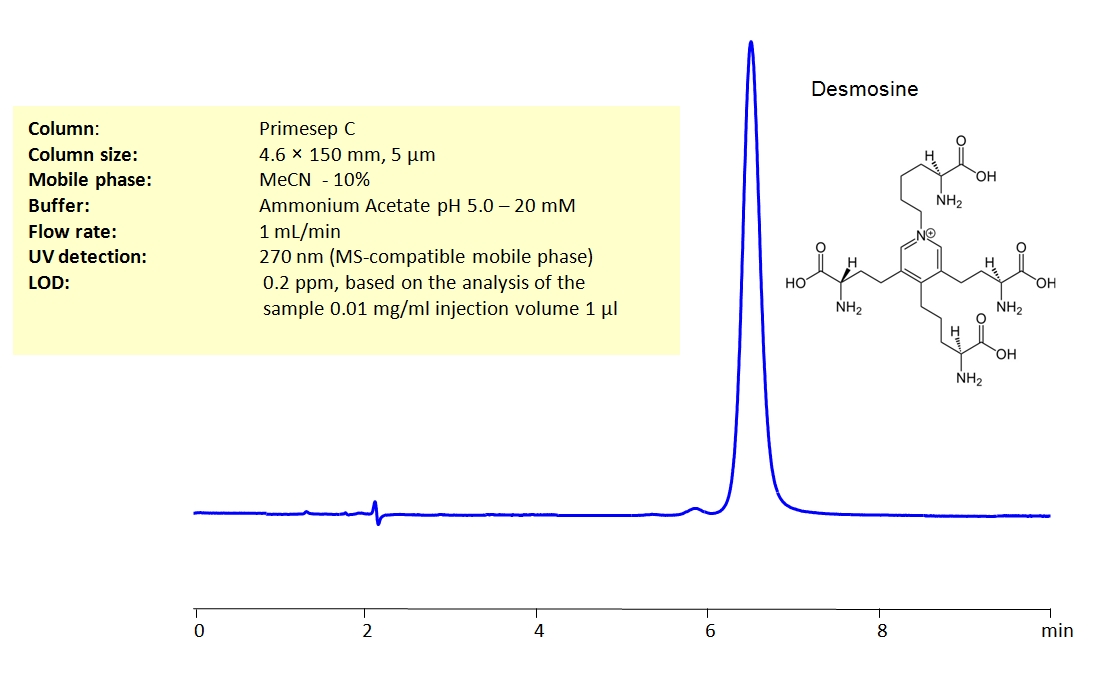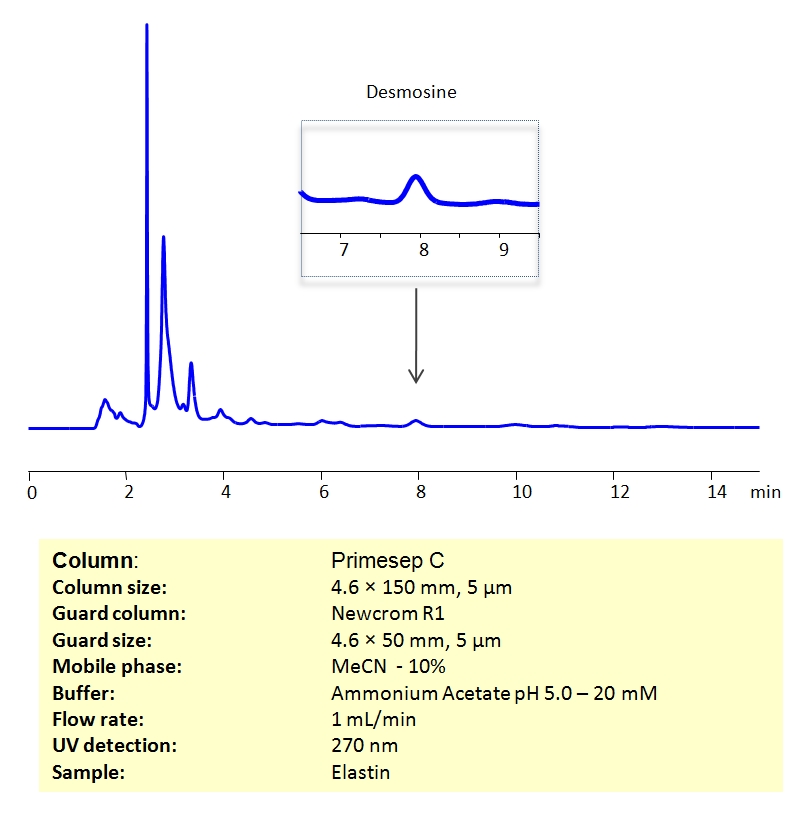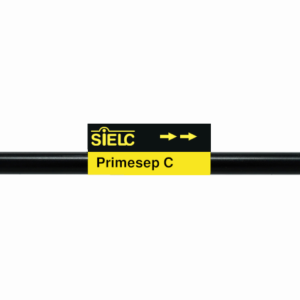HPLC Method for Desmosine on Primesep C by SIELC Technologies
High Performance Liquid Chromatography (HPLC) Method for Analysis of Desmosine.
Desmosine and isodesmosine are unique amino acids found in elastin, a protein in connective tissue such as elastic arteries, lungs, and skin. Both can be used as specific biological markers for the degradation of mature cross-linked elastin.
Desmosine is pyridinium-based amino acid derivative with C24H40N5O8+ molecular formula. It is found exclusively in elastin. Elevated levels of desmosine in urine can be a symptom of Chronic Obstructive Pukmonary Disease (COPF), so it can be used as a biomarker when monitoring progression and aiding in a potential diagnosis.
Desmosine can be detected at 270nm using Primesep C mixed-mode reversed-phase cation-exchange column and a mobile phase consisting of acetonitrile (ACN), and water with Ammonium acetate buffer.
| Column | Primesep C, 4.6 x 150 mm, 5 µm, 100 A, dual ended |
| Mobile Phase | MeCN – 10% |
| Buffer | Ammonium Acetate pH 5.0 – 20 mM |
| Flow Rate | 1.0 mL/min |
| Detection | UV 270 nm |
| Column | Primesep C, 4.6 x 150 mm, 5 µm, 100 A, dual ended |
| Guard | Newcrom R1 4.6×50 mm, 5µm, 100A, |
| Mobile Phase | MeCN – 10% |
| Buffer | Ammonium Acetate pH 5.0 – 20 mM |
| Flow Rate | 1.0 mL/min |
| Detection | UV 270 nm |
| Class of Compounds |
Aminoacid, Poly-amino acid |
| Analyzing Compounds | Desmosine |
Application Column
Primesep C
Column Diameter: 4.6 mm
Column Length: 150 mm
Particle Size: 5 µm
Pore Size: 100 A
Column options: dual ended






